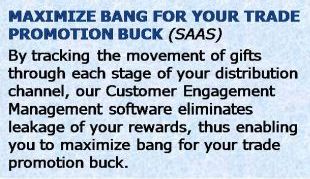Time and again, we come across companies who position their software around the GTM theme of “overcoming the tyranny of Excel”. Recent examples include developers of a business activity monitoring (BAM) platform and a mobile secondary sales application.
It is true that Excel-intensive environments are generally fraught with indiscipline and duplication of efforts. Therefore, the “tyranny of Excel” is very real. It is also true that any software worth its name inculcates discipline and eliminates duplication of efforts. To that extent, overcoming the tyranny of Excel is the raison d’être of many software products.
However, it does not make for good positioning.
By definition, positioning is the image of a product that a marketer tries to create in the minds of its target market. In other words, positioning does not equal product.
If we look at this from the customer’s point of view, what do we see?
We see companies who have spent millions of dollars to implement ERPs but have still not given up Excel. According to anecdotal evidence, 70% of Fortune 500 companies have ERPs but over 90% of them submit reports to their board of directors in Excel. Even in specialized functions like corporate treasury, for example, the use of Excel continues unabated. According to gtnews, “around 70% of (companies) are carrying out cash flow forecasting using Excel spreadsheets. Many corporates who have a (separate) treasury management system or a suitable module of an ERP system do not actually use the system for this purpose”.
Ease of use is the key reason for Excel’s dominance. Then there are other benefits of Excel: A former boss of mine who used to report to the company’s board of directors once quipped, “No other software allows you to make so many last-minute changes as Excel”!
So, whether we like it or not, Excel is not going away anytime soon.
Against this backdrop, it should be obvious that positioning a software product as overcoming the tyranny of Excel won’t get a vendor too far in the mainstream market. Such a GTM message might evoke a favorable response from the prospect’s IT middle management because they’re also often trying to overcome the Excel tyranny created by business users within their companies! However, the business case and budgets will need to go up to the C-Suite. Having seen board reports in Excel despite spending millions in ERP, C Level Executives are comfortable with Excel and are unlikely to find any compelling reason to shell out big bucks just to replace Excel.
In ca. 2000, a Big 4 ran an ad "Don't fix it if ain't broken. But what if you don't know it's broken?" The McKinseys and BCGs have the cachet required to persuade companies that what they thought is working is actually broken. Very few other vendors do. But they don't realize it.
— Ketharaman Swaminathan (@s_ketharaman) March 22, 2024
One common outcome of this flawed GTM is the “100 demos, 0 order” problem that ails many software companies. One of them – a provider of a mobile secondary sales software – confided in us that they were able to showcase their products to eager audiences all the time but were unable to win too many deals in the end.
If “overcoming the tyranny of Excel” is not a good GTM message, what is?

We believe that software and all other high-tech products and services need to be positioned using Marketable Items regardless of whether they replace Excel or do something else.
Marketable Items package product features (and service capabilities) into compelling reasons to buy that resonate strongly with the target market’s pain areas and hot topics. If they don’t create gain, they must solve pain. You can find an example of a Marketable Item for a Customer Engagement Management SAAS in the exhibit on the right.
More information on how to create Marketable Items can be found here. To know more about how our re-positioning based on Marketable Items propelled the aforementioned mobile secondary sales application provider into a different orbit, click here.
